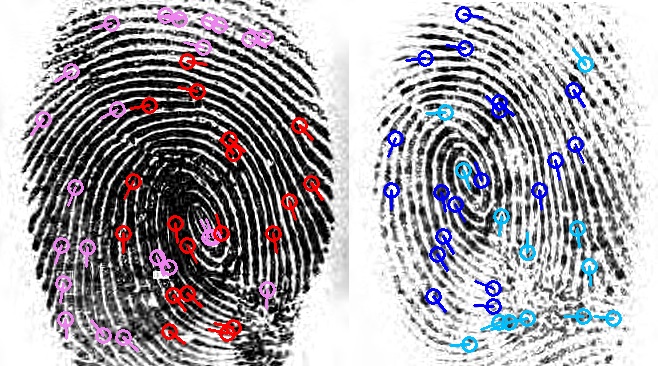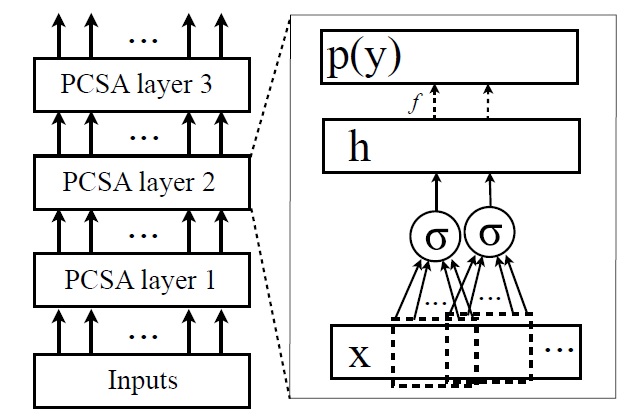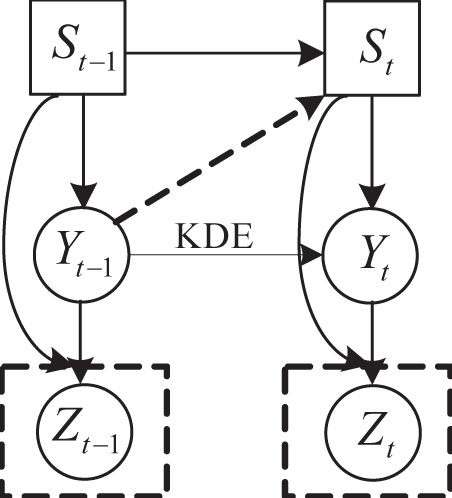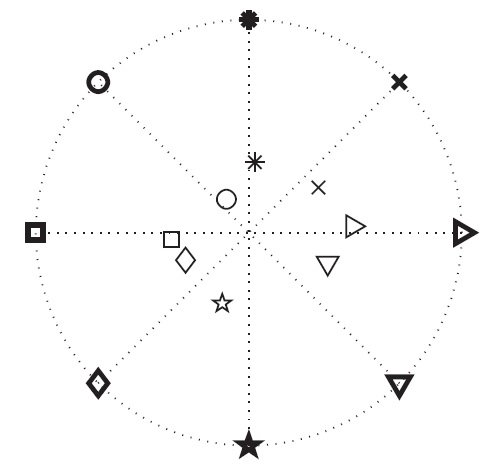 Fingerprint Matching
Fingerprint Matching Evaluate the fingerprint matching quality by studying the minutiae patterns over large datasets with machine learning methods.
 Deep Feature Learning with Target Prior
Deep Feature Learning with Target Prior Developed a framework which learns deep features by incorporationg prior knowledge about the taret variables. Features learned with this method will keep a balance between generality and task specificity.
 Facial Feature Prior Model under Varying facial expression and poses
Facial Feature Prior Model under Varying facial expression and poses Developed a facial feature prior model based on 3way-Restricted Boltzmann Machine, which captures the relationship between facial feature points under significant facial expression and pose variations.
 Learning Probabilistic Graphical Model by Incoporating Domain Knowledge
Learning Probabilistic Graphical Model by Incoporating Domain Knowledge Most existing regression/classification algorithms are data-driven, ignoring various constraints in the application domain, even though in many domains these constraints can be easily obtained and have potential to substantially benefit the performance of regression/classification.
For example, in BCI the movement of an external device like a prosthetic limb is subject to the related anatomical and kinematic constraints. The existing decoding algorithms ignore these constraints. We propose a Bayesian decoding model to explicitly capture the constraints and to combine them with brain measurements, yielding a significant improvement in decoding accuracy. Specifically, we exploit the constraints that govern finger flexion and incorporate these constraints into a prior model on finger movement. The improved finger exion decoding is then achieved by combining the prior model with the ECoG signals.
 Learning with Target Prior
Learning with Target Prior Learning with Target Prior is a new learning scheme, in which the prior knowledge about the target variable and the uncorresponded data are used to train the parametric function that maps data to target variables.
It is applied to decoding problem in BCI and body pose estimation problem in computer vision.
 Decoding Movement Onset and Directions from ECoG signals
Decoding Movement Onset and Directions from ECoG signals In this study, we demonstrate that through dynamic probabilistic graphical models we can detect the onset of intended movements and their direction using ECoG signals recorded from the surface of the cortex in humans. It would have many practical applications in everyday life. For example, it may support faster braking during vehicle operation or more raphid targeting in military applications.